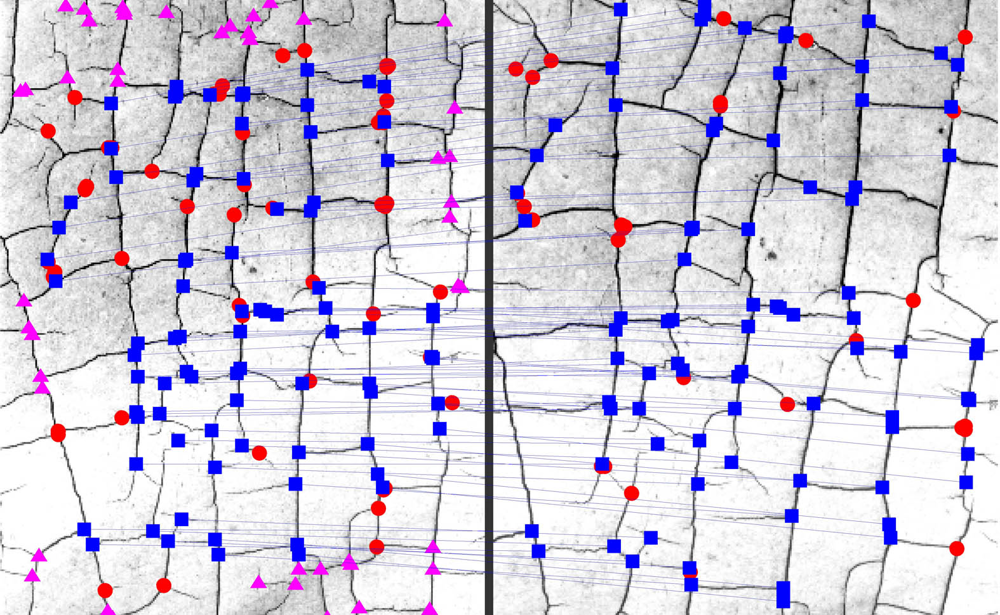Analysis of Craquelure
Craquelure represents the unique crack formations on paintings that form with the age of painting and become an inherent part of composition highlighting its seniority. Craquelure patterns are shaped by a number of factors among which the materials used by artist, temperature and microclimate at the exhibition place, as well as external stresses.
The fact that these crack patterns are partly determined by the properties of artistic materials used (paints, varnishes, binders, various kinds of support, etc) allows for a conclusion that paintings from similar geographic locations may exhibit same type of craquelure patterns.
Craquelure patterns may serve as a unique "fingerprint" of particular painting. Once recorded, the pattern may be used for confirming the identity of a painting at an auction or after exhibition of it in some foreign museum. It is commonly known that back in 1911 DaVinci's Mona Lisa has been stolen from Louvre and found again two years later. Although re-obtaining this great masterpiece is a big success, some people may ask whether the Mona Lisa found was the genuine painting or a copy of great quality. If only craquelure fingerprints for the painting have been collected earlier, the confirmation of identity would not raise such questions.
Development of an algorithms which can interpret, store and process such crack patterns is an important part of our research together with our colleagues from the University of Windsor and the Institute for Diagnostic Imaging Research (Windsor, Canada).
